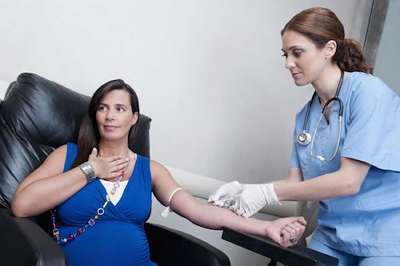Low Platelet Count During Pregnancy

Contents:
- Normal Platelet Count in Pregnancy
- What are the Reasons for Platelets Count Lowering in Pregnancy?
- What are the Ways to Increase the Level of Platelets During Pregnancy By Using Proper Nutrition?
- Thrombocytopenia in Pregnancy and its Treatment
- Main Symptoms and Dangers
- Methods of Treatment
Low Platelet Count in Pregnancy: Causes, Symptoms and Treatment
Platelets (PLT) are the smallest blood cells produced by the bone marrow. They participate in blood clotting. The continuous clotting in the body destroys about 40% of circulating platelets per day. The life expectancy the platelets have is only 7-10 days.
Normal Platelet Count in Pregnancy
Platelet count during pregnancy remains practically unchanged. Normal platelet count in non-pregnant women is within the range of 180-320/10 l. However, pregnant women may have a slightly lower normal level of platelets.
What are the Reasons for Platelets Count Lowering in Pregnancy?
Thrombocytopenia or critical reduction of platelets in the blood analysis can be caused by several factors:
- AIDS;
- Taking certain pharmacological preparations;
- Sepsis;
- Leukemia;
- Lupus.
However, Thrombocytopenia in pregnancy may occur without these reasons and, as a rule, this does not lead to any serious complications. Standard techniques used to increase the number of platelets in the blood may vary depending on the case severity.
Very low platelets count in the analysis is can indicate at unstoppable bleeding in a patient, this is the threshold beyond which Thrombocytopenia is transformed into a real problem. In this case, if the platelet count drops below 100,000 units per µL, the medical staff of maternity hospitals normally refuses to provide an epidural or a cesarean section.
In fact, a non-critical level of platelets in pregnancy can be caused by trivial malnutrition or improper diet of the future mother. The following guidelines are to help pregnant tackle this problem.
What are the Ways to Increase the Level of Platelets During Pregnancy By Using Proper Nutrition?

This is primarily erianthous milkvetch (Astragálus dasyánthus), which is a very common means to elevate the number of platelets. This has been proven by the research activities aimed to reduce the chemotherapy damage. This herbaceous plant has the ability to significantly increase the number of platelets in the blood.
All pregnant women should increase the intake of vitamin C during childbearing to exclude the unwanted shortages and problems related. Citrus diet containing large amounts of vitamin C should be doubled. Raspberry is another great source of vitamin C. Raspberries are better be served fresh or mashed with sugar.
Zinc is a mineral needed by all pregnant women without exception. Zinc deficiency in the mother-to-be often results in pathologies of the fetus and congenital deformities. In addition, zinc deficiency is also associated with a decrease in platelet count during pregnancy; while adding zinc in the diet causes a sharp increase in platelets developed by the bone marrow. This list includes beets, meat, fish and Vitamin B12.
Thrombocytopenia in Pregnancy and its Treatment
Platelets represent fragments that derive from the destruction of megakaryocytes. These giant cells dwelling in the bone marrow originate a large number of small and flat particles. Normally, their concentration in 1 l of blood is about 200-300*109. Thrombocyte lifetime does not exceed seven days, and then it is utilized in the liver or spleen.
Protection, which is the main function of platelets, is realized due to a blood clot formed at the site of damaged vessel. In addition, these tiny cells contribute to the nutrition of the inner surface of arteries (intima) providing its elasticity and resistance to external damage. Platelet deficiency can be associated with a slowed formation, intensive destruction or uneven distribution. The latter case deals with the platelets normal in total number, but concentrated in certain areas of the vascular bed, while lacking in other areas.
Reasons
Thrombocytopenia in pregnancy is common occurrence and there are several reasons for this:
- hormonal modifications decrease the lifetime of platelets;
- increased volume of circulating blood may reduce the relative quantity of platelets;
- poor nutrition and related folate and B12 deficiency;
- nephropathy during pregnancy , preeclampsia, eclampsia;
- viral infections;
- autoimmune thrombocytopenia developing due to the activation of the immune system against its own blood cells;
- allergic reactions and systemic diseases;
- various obstetric haemorrhage (Placental Abruption);
- intrauterine fetal death;
- intake of drugs (antibiotics) and intoxication.
Low red blood cells and platelet count may be physiologically insignificant (no less than 100*109).
Usually, this condition does not manifest itself and is found at a routine examination. In this case, treatment is not required, but it is necessary to control the analysis. In the case of pathological thrombocytopenia, it is necessary to specify the underlying cause and begin treatment. Otherwise serious complications may occur.
Main Symptoms and Dangers

Symptoms of thrombocytopenia in pregnant women are somewhat more diverse than those in regular patients. Symptoms in women:
- bruises caused by touching, sometimes they are formed without external influences;
- bleeding nose and gums, but the latter is not always specific, since gingivitis pregnant develops in many women without deficiency of platelets in gestation period;
- gastro-intestinal bleeding, including hemorrhoids and fissure;
- dotty hemorrhages (ecchymosis)on the limbs and anterior surface of the trunk;
- vaginal bleeding.
Untreated thrombocytopenia can lead to serious complications of the pregnancy and delivery process. The most dangerous is massive bleeding, which can result in patient’s death. In addition, during the autoimmune process, antibodies penetrate the placenta into the bloodstream of the fetus. In this case, the newborn may develop thrombocytopenia.
Methods of Treatment
The disease treatment turns indispensable at a platelets count less than 20-40*109 in l. Along with the therapy of the underlying disease, which has led to a shortage of platelets, the hemostasis system must be maintained as well.
The drug of choice in this case is the glucocorticoids (prednisolone, dexamethasone). In late pregnancy, they also speed up the formation of the baby’s lungs. Therefore, if there are special indications, the doctors may hold a premature delivery. Short courses of corticosteroids are used to treat thrombocytopenia, the dosage is reduced gradually if the clinical effect is achieved.
If corticosteroids are not effective, the doctor may prescribe intravenous administration of immunoglobulin. It is injected 3-4 times during pregnancy and then during and immediately after the delivery. Quite rarely, in urgent cases a pregnant woman may undergo a platelet transfusion.
If all of the mentioned above medications are ineffective, a pregnant woman may have her spleen removed (a surgery called splenectomy). It is advisable to perform the operation through the laparoscopic access.
The type of delivery is to be discussed individually, but it’s better to conduct a planned C-section in order not to harm the baby. This is especially advisable for the newborns with a low platelet count.
Thrombocytopenia affects 1-2 % of pregnant women, in 70 % of cases this condition is caused by changes the body undergoes after the conception. The causes of this disease are quite diverse, but the most dangerous is the immune mechanism. This is explained by the fact that the pathology may transfer to the baby, and thrombocytopenia in newborn babies often leads to serious complications. At early stages the disease goes asymptomatic, that’s why it is so important to pass blood tests regularly.